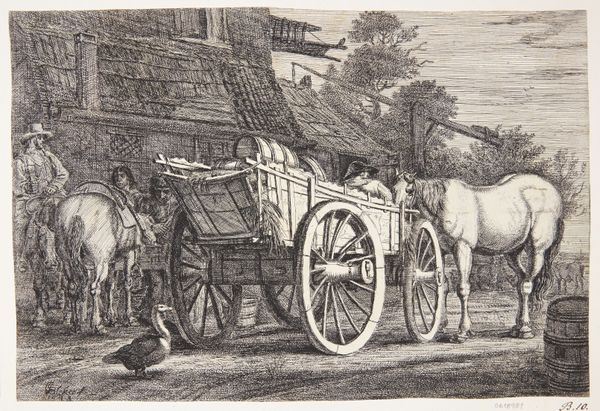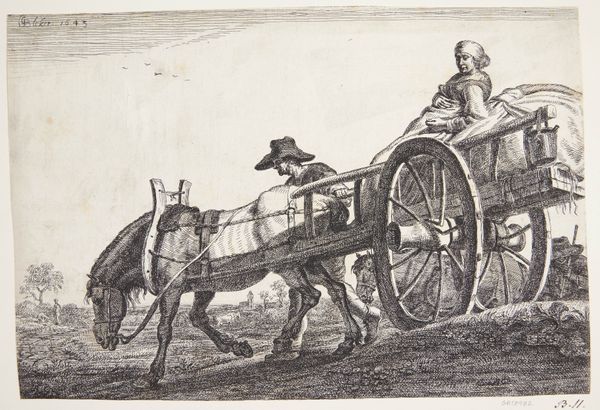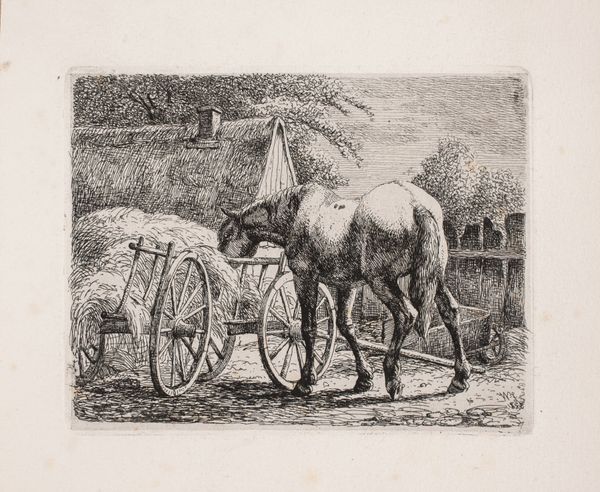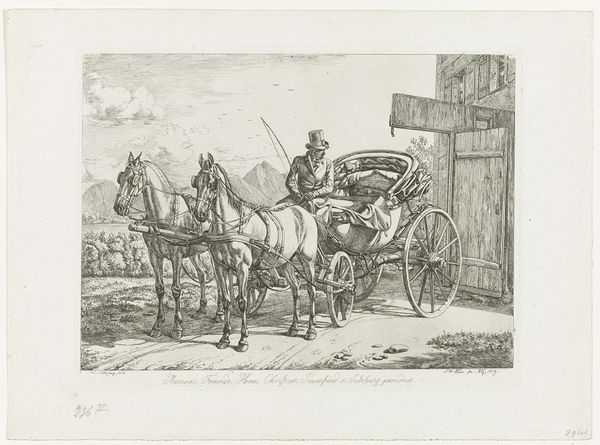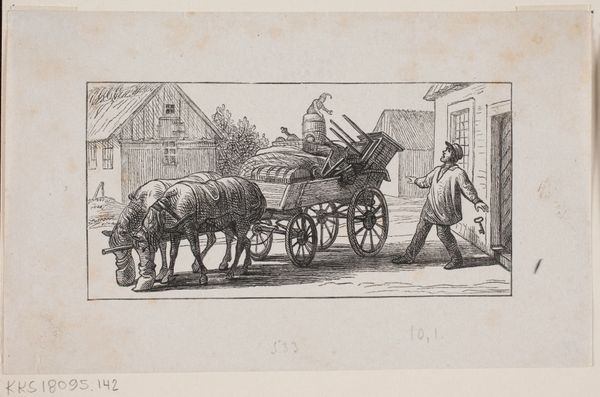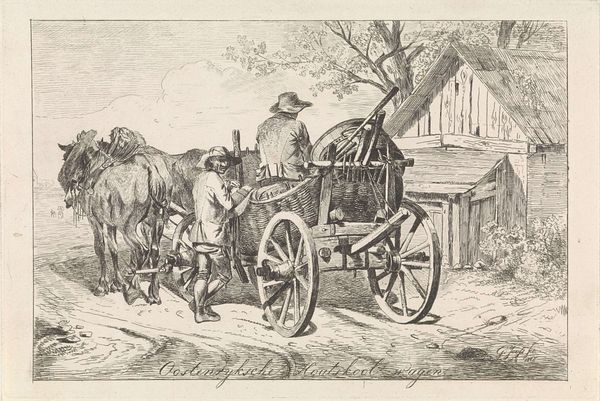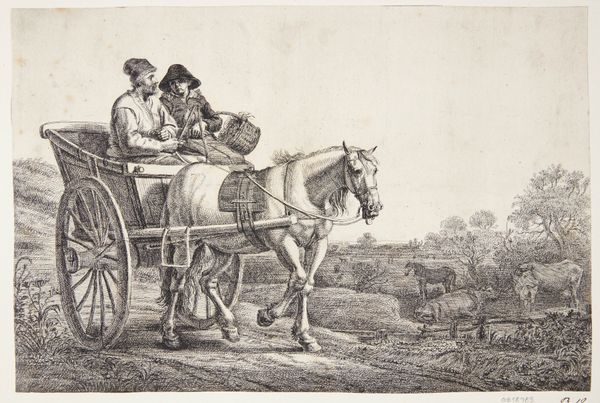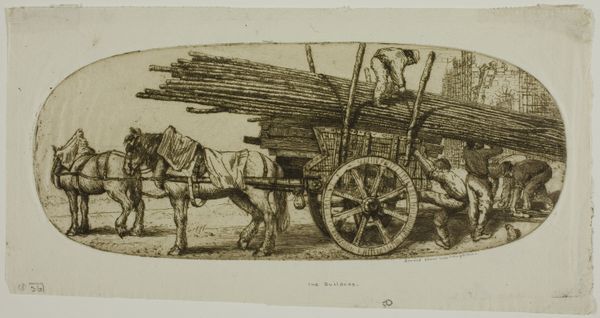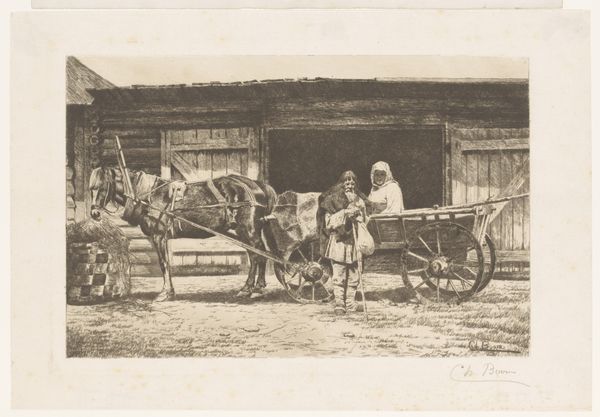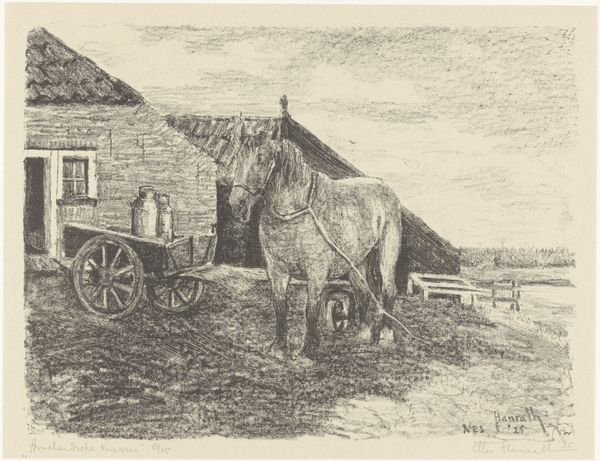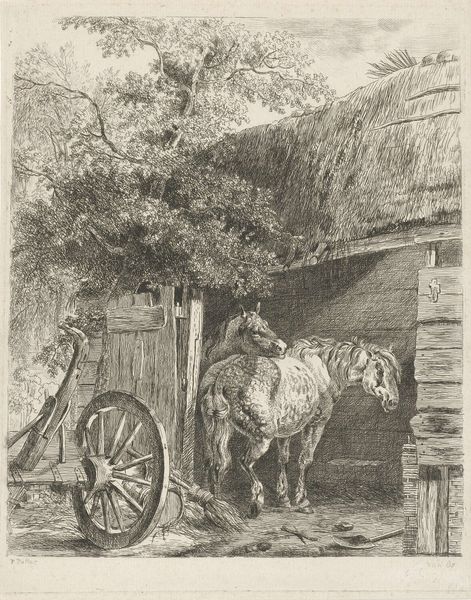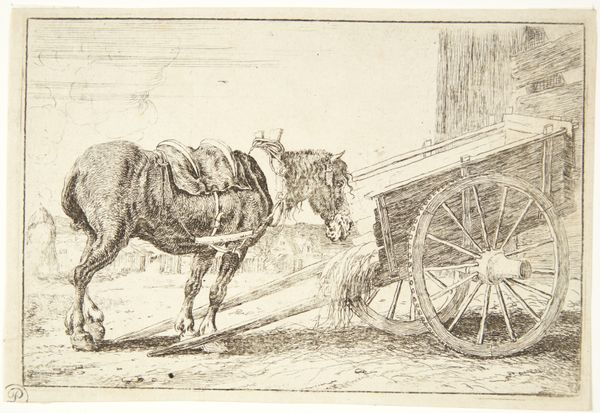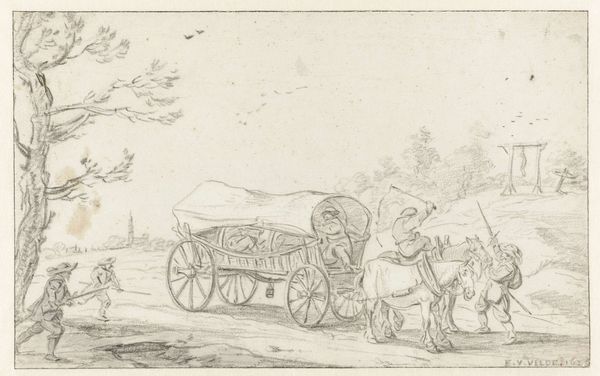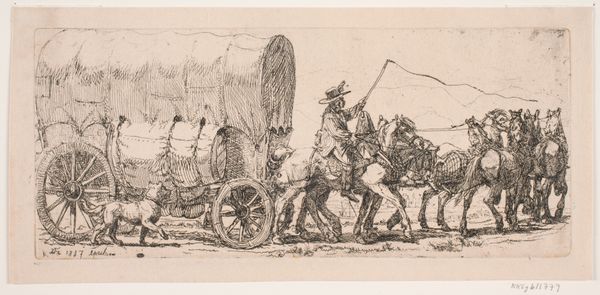
print, etching, engraving
#
dutch-golden-age
# print
#
etching
#
landscape
#
genre-painting
#
engraving
Dimensions: plate: 20.6 x 30.2 cm (8 1/8 x 11 7/8 in.) sheet: 20.7 x 30.2 cm (8 1/8 x 11 7/8 in.)
Copyright: National Gallery of Art: CC0 1.0
Gerrit Claesz Bleker created this etching, "The Four-Wheeled Cart," in the Netherlands sometime in the first half of the 17th century. It depicts a scene of rural commerce, with a loaded cart, horses, and figures gathered in front of what seems to be an inn or trading post. The image creates meaning through its depiction of everyday life. In the 17th century, the Dutch Republic was a center of global trade and commerce. The rise of a wealthy merchant class created a demand for genre scenes like this one that depicted ordinary life in the Netherlands. Bleker's etching reflects the growing importance of trade and transportation in Dutch society, and it may also comment on the social structures of his time. Is it self-consciously celebrating the rural life or just a representation of it? To better understand this etching, one could research the economic history of the Dutch Republic in the 17th century, as well as the art market and the social status of artists like Bleker. Art is always contingent on social and institutional context.
Comments
No comments
Be the first to comment and join the conversation on the ultimate creative platform.
